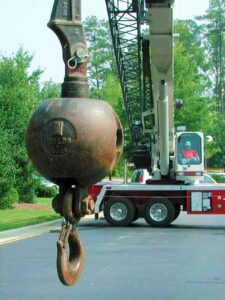
The comprehensive guide on hydraulic cranes – the heavy lifters that play a pivotal role in construction, shipping, and various industries. Whether you’re a seasoned professional or simply curious about these powerful machines, our aim is to equip you with the knowledge needed to understand, select, and maintain hydraulic cranes effectively.
Unveiling Hydraulic Cranes
Hydraulic cranes are engineering marvels designed to lift, move, and position heavy loads with precision. Their hydraulic systems enable controlled lifting by utilizing fluids to transmit power. These cranes come in various sizes and configurations, each tailored to specific tasks and industries.
Types of Hydraulic Cranes
Telescopic Boom Cranes
Telescopic boom cranes, also known as “telehandlers,” feature extendable booms that can reach impressive heights. They’re ideal for tasks requiring both vertical and horizontal movement.
Crawler Cranes
Crawler cranes are mounted on crawler tracks, providing exceptional stability on uneven terrains. They’re often used in heavy lifting operations at construction sites.
Mobile Cranes
Mobile cranes are versatile and transportable. They come in various configurations, such as rough-terrain cranes and all-terrain cranes, making them adaptable to different working environments.
Tower Cranes
Tower cranes are commonly seen on large construction sites. They offer impressive lifting capabilities and are well-suited for projects requiring continuous heavy lifting over an extended period.
Life Span of Hydraulic Cranes
The longevity of hydraulic cranes depends on various factors, including maintenance, usage, and operating conditions. Regular care and attention can significantly extend the life span of these essential machines.
Routine Inspections
Regular inspections are paramount to identify wear and tear, fluid leaks, and potential issues. Addressing problems promptly can prevent further damage and ensure the crane’s reliability.
Proper Lubrication
Adequate lubrication of moving parts is essential for minimizing friction and wear. Follow manufacturer guidelines for lubrication frequency and use high-quality lubricants to maximize the crane’s life span.
Load Monitoring
Exceeding a crane’s rated capacity can lead to premature wear and even catastrophic failure. Implement load monitoring systems to prevent overloading and ensure safe operations.
Hydraulic Crane Maintenance
Maintaining hydraulic cranes involves a combination of routine checks and adherence to manufacturer recommendations.
Fluid Analysis
Regularly analyze hydraulic fluid to detect contaminants, degradation, and changes in viscosity. Clean and replenish the fluid as needed to optimize crane performance.
Component Inspection
Inspect hydraulic hoses, cylinders, and other components for signs of leaks, corrosion, or damage. Replace or repair faulty parts promptly to prevent further issues.
Operator Training
Proper training for crane operators is crucial. Skilled operators can minimize wear and tear through precise movements, reducing the strain on the crane’s components.
Comments are closed.